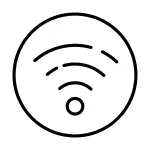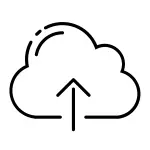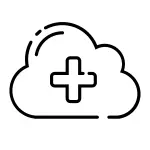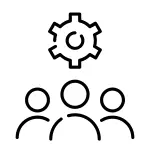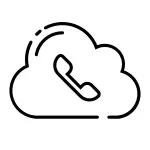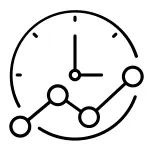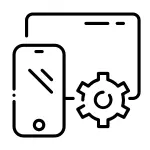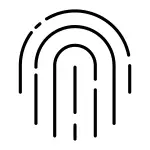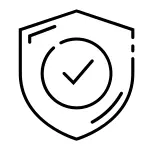The veterinary profession has a reputation for being technologically challenged. However, as the world increasingly shifts digital, an increasing portion of the clientele demand frequent updates and digital service, and where the clients go, companies must follow.
With that, vet clinics have begun adopting technologies that will make their business thrive and stay viable in the market. One of such technologies is PACS.
PACS, or Picture Archiving and Communication System, was formerly only available to major institutions. As technology advanced with time, PACS have become accessible for practically any healthcare facility undertaking any type of medical imaging, including veterinary practices, thanks to lower storage costs and more market competition.
This article will explore PACS, what it is, what it does, and why it makes a difference.
PACS: Defined
A cloud PACS system comprises several devices that eliminate the need for personal digital films. It uses an online strategy to take, upload, and store photographs and data of a patient, not to mention a furry, scaly, or feathery one.
Everything from picture acquisition and report preparation to archiving and data transfer is connected, controlled, and managed by an online cloud PACS for veterinary clinics. After that, the files get streamed to create a cloud. The user requires a connection to the internet to access the cloud and see the images.
It has become simple to integrate with a PACS’s most common practice information systems.
The Components of a PACS System
The following are the four essential components of a simple PACS system:
PACS Server
Collecting medical images is the first step in this example basic system. The use of an imaging modality obtains these images. CT, MRI, x-ray (CR or DR), ultrasound, and PET are the most frequent modalities. Then, the images are transferred in DICOM format from the modality to PACS via a secure network once they have been obtained.
One or More Modalities
When PACS receives images from the modality, it can do various tasks.
PACS will store and manage the images for quick retrieval in this sample system. Each DICOM image has embedded information about the image, the study, and the patient, allowing images to be quickly discovered and not accidentally jumbled up with irrelevant photos later on.
PACS frequently gets utilized as a centralized repository for long-term archiving of medical images and a means of accessing these images quickly.
A Medical Image Viewing Workstation
The next step in this sample basic system is to access the medical images for viewing: a viewing workstation. One way is to pull studies from PACS into an independent piece of software installed on a viewing workstation PC using query and retrieval.
The user can enter input parameters such as patient name, patient ID, or study date and then query PACS for results that fit those criteria. After that, the application will then allow the user to pull the desired data from the PACS and display them on the workstation.
Web viewing is an alternative approach provided for many web-based PACS. This system is becoming more common as users log in and see photos straight from PACS over the web, giving them more freedom to view images where and when they need them.
Notably, there is no fundamental difference in image quality between web viewing and standalone applications.
A Network
A secure network is the final component of this sample basic PACS system.
The network sends images from the modality to PACS and shares them with viewing workstations. Patient confidentiality, specifically of pets, is as important as in any other part of healthcare. Images transmitted via an open network, such as the internet, must be encrypted to be sent safely.
The Benefits of PACS
It is essential to keep a veterinary business afloat to keep up with the changing times by adopting the latest technology. With that, medical imaging advancements offer a slew of advantages, such as:
- It is Everywhere: The cloud solution will always be there for you, like your best furry friend. As a result, veterinary doctors can work in even the most isolated locations. Furthermore, you can share a patient’s health information with other practitioners quickly and easily.
- It is Safe: Thanks to online cloud solutions, data loss is no longer an issue. Data loss due to power outages or hard disk failure is now a thing of the past with a cloud PACS system.
- It is Cost-effective: Replacement of CDs and local storage costs by a cloud PACS system can significantly decrease costs. It also saves considerable workplace space that would otherwise get used to physically keeping CDs and documents.
- It is Environment-friendly: A cloud PACS system is sustainable and environment-friendly since it lessens, if not eliminates, the need for energy, power, or cooling. Furthermore, it is unaffected by environmental factors.
- It is Secure: A cloud PACS system allows for the secure and trustworthy transmission of health data. It also allows customers to combine multiple storage resources into a single storage pool.
Conclusion
Several veterinary practices have begun to connect to cloud technologies to modernize and improve their services. In this sense, cloud PACS solutions for Veterinary Clinics are user-friendly tools for routine veterinary care.
When choosing a PACS for your veterinary company, go for a system that matches your working culture rather than a solution that does not act as one but instead forces you to change your workflow substantially.
In the end, you can take advantage of medical imaging technology’s benefits to deliver the finest possible healthcare for the pets you treat while also arming their owners with all the knowledge they require with the right technology at your disposal.
If you are looking for ways to leverage your veterinary practice to thrive in the ever-evolving world, consider Veterinary IT Services.
Veterinary IT Services is the UK’s first and only IT support firm dedicated solely to veterinary practices. Veterinary IT Services’ expertise as a Managed Service Provider includes technological systems that veterinarians should have in place, cyber security, business improvement, and industry news and trends, all to propel your veterinary practice to new, greater heights.
Make an appointment with Veterinary IT Services for a free consultation today.




